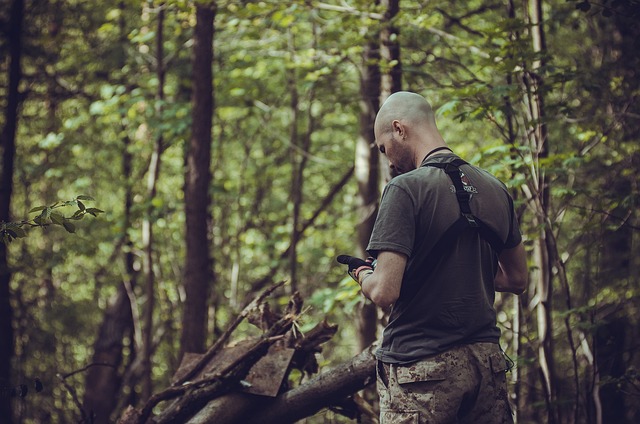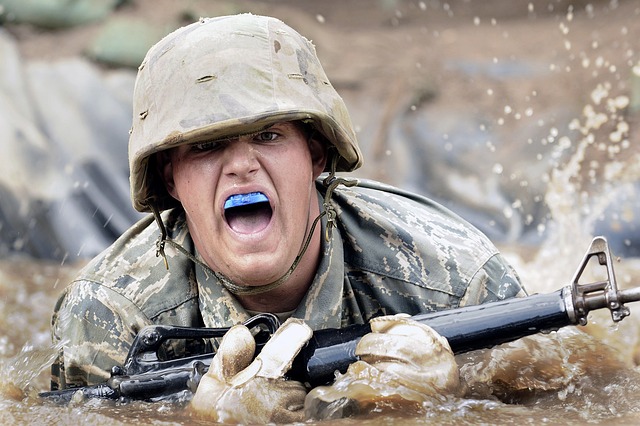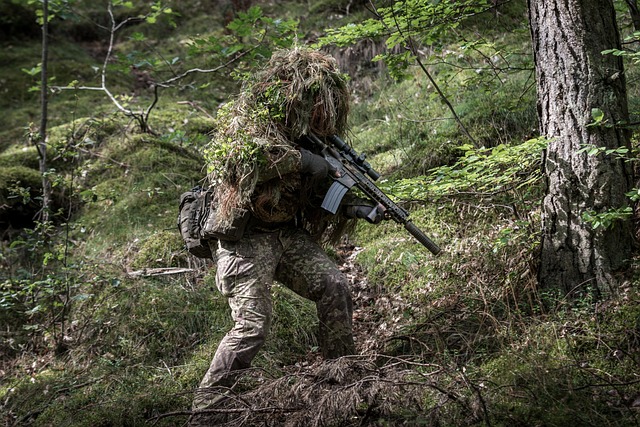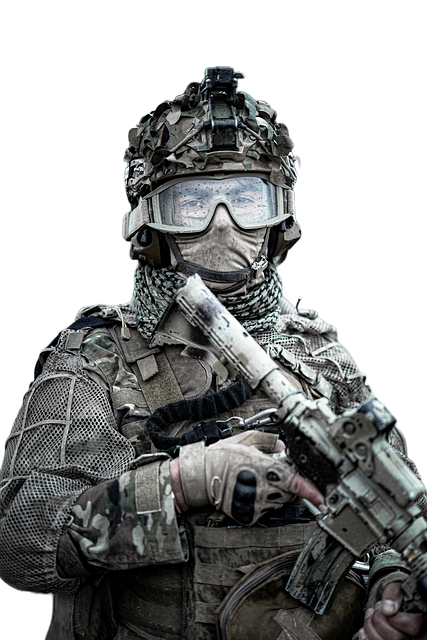
Tactical flashlights for military use have become essential tools that significantly enhance the efficiency and safety of field operations, particularly under low-light conditions. These advanced devices are hands-free, allowing soldiers to maintain full dexterity and handle weapons or intricate tasks without obstruction. They are designed to endure extreme environments, offering robust lighting solutions with adjustable intensities for various operational needs, from targeted illumination to ambient lighting across broader areas. The construction of these flashlights is made with durable materials like aircraft-grade aluminum and rubber armor for impact resistance, while features such as waterproofing and thermal regulation ensure functionality across diverse weather conditions. Standard provisions like compatibility with night vision goggles, red or green lenses to preserve night vision, and long battery lives cater to different terrains and mission types. Advanced models boast strobe settings, voice command compatibility, and programmable settings to further improve situational awareness and decision-making under critical conditions. As military training evolves with these technologies, the integration of tactical flashlights for military use is marking a strategic shift towards more efficient, safe, and technologically advanced operations, with future enhancements potentially including augmented reality features for overlaying information directly onto the field of view. This commitment to innovation underscores the importance of providing military personnel with cutting-edge tools that not only optimize performance but also adapt to the dynamic demands of modern defense and rescue missions.
In the realm of field operations, particularly within military applications, the role of lighting is not merely to illuminate but to enhance situational awareness and operational effectiveness. This article delves into the transformative impact of hands-free lighting solutions, which have become indispensable tools for those working under the cover of darkness. From the evolution of tactical flashlights for military use to the integration of these technologies into training programs, we explore the key features that distinguish exceptional hands-free lighting options and evaluate their performance across varied environments. Furthermore, we examine the strides in advanced lighting technology and offer a glimpse into future developments poised to redefine nighttime field operations.
- Understanding the Role of Hands-Free Lighting in Field Operations
- The Evolution of Tactical Flashlights for Military Use
- Key Features to Look for in Hands-Free Lighting Solutions
- Evaluating the Best Hands-Free Lighting Options for Different Environments
- The Impact of Advanced Lighting Technology on Nighttime Field Operations
- Integrating Hands-Free Tactical Flashlights into Military Training Programs
- Future Developments in Hands-Free and Wearable Lighting Systems for Fieldwork
Understanding the Role of Hands-Free Lighting in Field Operations

Hands-free lighting plays a pivotal role in ensuring efficiency and safety during field operations, particularly when tactical flashlights for military use are employed. These devices are designed to provide illumination while allowing users to maintain full use of their hands, which is crucial for tasks that require dexterity or the handling of weapons. The integration of hands-free lighting into military tactics enhances situational awareness by freeing up both hands to perform duties such as navigation, weapon operation, and communication devices management. Additionally, tactical flashlights are engineered to withstand harsh environments, offering durable and reliable light sources that can be mounted on helmets or weapons, or positioned elsewhere in the vicinity for optimal lighting without direct handling. The strategic placement of these lights enables military personnel to operate effectively in low-light or no-light conditions, which is often a critical factor during covert operations or when conducting nighttime patrols. Moreover, the adjustable light settings on tactical flashlights allow users to conserve battery life by using less intense beams for prolonged periods, ensuring that the equipment remains operational for extended missions without the need for frequent battery changes. The adoption of hands-free lighting thus not only enhances operational capabilities but also contributes to mission longevity and success by minimizing the potential for manual light source failure or the need to halt operations for recharging or replacing batteries.
The Evolution of Tactical Flashlights for Military Use

The utilization of tactical flashlights for military operations has undergone significant advancements over the past few decades, transforming from basic, hand-held torches to sophisticated devices with a myriad of functionalities. Initially, these lights were simple tools providing illumination during nighttime activities or in low-light conditions. However, as the demands of modern warfare evolved, so did the capabilities of tactical flashlights. Today, they are integral components in a soldier’s kit, offering hands-free lighting solutions that are critical for various field operations. These devices have incorporated features such as adjustable beam intensity, strobe functions for disorienting adversaries, and advanced LED technology that ensures durability and longevity of light output. The integration of robust construction materials, such as aircraft-grade aluminum and rubber armor, provides both impact resistance and a non-slip grip, essential for rugged terrain and high-stress environments. Additionally, the evolution of tactical flashlights includes waterproofing and thermal regulation to maintain functionality in all weather conditions. As a result, these lights have become indispensable tools that enhance situational awareness, improve task performance, and provide tactical advantages on the battlefield.
Key Features to Look for in Hands-Free Lighting Solutions

When selecting hands-free lighting solutions for field operations, particularly for military use, it is crucial to prioritize features that enhance functionality, safety, and reliability. Tactical flashlights for military use are designed with robust construction to endure the harshest conditions. They often come with adjustable beam intensities, allowing users to switch between a focused spotlight for distant objects and a diffused glow for broader illumination. This versatility is essential when navigating unpredictable environments or performing precise tasks.
Additionally, these tactical flashlights typically feature a durable, impact-resistant body, ensuring they can withstand drops or being struck against hard surfaces. They are also equipped with secure attachment systems, such as straps or clips, enabling hands-free operation. This means soldiers can affix the light to their helmet, weapon, or any other gear without obstructing their movements or vision. Moreover, features like water resistance and long battery life are non-negotiable, as they guarantee the light will function when needed most. For military operations, the ability to work in tandem with night vision goggles is also a significant advantage, ensuring that tactical flashlights complement the soldier’s arsenal of equipment for effective operations under any conditions.
Evaluating the Best Hands-Free Lighting Options for Different Environments

When selecting hands-free lighting options for field operations, tactical flashlights for military use stand out as a versatile and critical tool. These devices are engineered to meet the rigorous demands of operational environments, offering features that ensure visibility without compromising the user’s mobility or hands. For instance, headlamps with adjustable beam patterns allow operators to illuminate both close-quarters tasks and distant areas effectively. The best models feature a sturdy construction, capable of enduring harsh conditions, from rain and dust to extreme temperatures. Additionally, they often come with red or green lens options, which preserve night vision while providing ample light for various tasks.
In different environments, the requirements for hands-free lighting can vary significantly. In open fields or forested areas, high-lumen flashlights with long battery life are essential. They offer a broad beam that cuts through vegetation and shadows. For confined spaces like caves or urban canyons, a flashlight with a focused spot beam is preferred to navigate without alerting adversaries. Tactical flashlights for military use are designed with these considerations in mind, offering options from hands-free headlamps to weapon-mounted lights that complement the operator’s toolkit. Features such as strobe settings or red light modes can also be critical, aiding in signaling or maintaining stealth during sensitive operations. The choice of hands-free lighting should always align with the mission’s specific needs and the environmental conditions expected to encounter.
The Impact of Advanced Lighting Technology on Nighttime Field Operations

The advent of advanced lighting technology has significantly enhanced the capabilities of nighttime field operations, particularly within military contexts where tactical flashlights for military use play a pivotal role. These sophisticated lighting solutions have revolutionized how personnel navigate and perform tasks under low-light or complete darkness. The compact yet powerful LED systems embedded in tactical flashlights provide a hands-free illumination that allows soldiers to operate with both hands ready for action, which is crucial during covert operations or when managing equipment. The adjustable intensity settings enable operators to choose the optimal brightness for various situations, ensuring visual acuity without compromising stealth. This technology not only aids in maintaining operational security but also reduces the risk of injury or equipment damage that could occur from fumbling with a flashlight in dark environments. Additionally, the long-lasting battery life and durability of these devices mean that they are reliable under prolonged use, which is often the case in field conditions. The strategic deployment of hands-free lighting systems has thus become an indispensable aspect of modern military tactics, contributing to more efficient and safer nighttime operations. Furthermore, the integration of advanced features such as programmable settings and voice commands allows for seamless interaction with these devices, enhancing situational awareness and decision-making processes in critical scenarios. The impact of this technology on the effectiveness of field operations is undeniable, offering a versatile and dependable tool that can adapt to diverse environments and demands.
Integrating Hands-Free Tactical Flashlights into Military Training Programs

The integration of hands-free tactical flashlights into military training programs has significantly enhanced operational efficiency and readiness. These advanced lighting devices are designed to provide a reliable and hands-free illumination source, which is crucial for tasks that require the use of both hands, such as navigating through unfamiliar terrain or performing technical operations in low-light conditions. The tactical flashlights for military use are engineered with robust construction and high-intensity outputs, ensuring they can withstand the rigors of field operations while providing ample lighting to illuminate critical areas. By incorporating these lights into training exercises, military personnel can acclimate to the benefits and capabilities of hands-free tactical lighting, thereby improving their adaptability and effectiveness in real-world scenarios. This seamless integration not only streamlines training methodologies but also fosters a more proficient response to various operational demands. The adoption of these devices is indicative of a strategic shift towards incorporating cutting-edge technology into military protocols, enhancing the safety and success of field missions.
Future Developments in Hands-Free and Wearable Lighting Systems for Fieldwork

As field operations in various sectors, including military and rescue missions, evolve to demand greater efficiency and safety, the development of hands-free and wearable lighting systems has become a critical area of innovation. The integration of advanced technologies into tactical flashlights for military use, such as LEDs that offer brighter illumination with less energy consumption, is paving the way for next-generation devices. These high-intensity lights are designed to be hands-free, allowing operators to navigate challenging terrains or perform tasks without the encumbrance of holding a flashlight. Future developments promise to enhance user experience through augmented reality (AR) capabilities, where lighting systems could overlay critical information onto the environment, ensuring that military personnel can operate effectively even in total darkness. Additionally, there is an emphasis on creating these systems with durability and adaptability in mind, ensuring they can withstand harsh conditions while providing versatile lighting options tailored to specific operational needs. Smart systems are also being developed, incorporating sensors and AI to adjust brightness automatically based on the environment or task at hand, thereby conserving battery life and improving performance. These advancements underscore a commitment to equipping field operatives with cutting-edge tools that not only improve their situational awareness but also streamline their operations for optimal safety and efficiency.
In conclusion, hands-free lighting has revolutionized field operations, particularly in military applications. The evolution of tactical flashlights for military use from simple devices to sophisticated tools equipped with advanced technology underscores the importance of adaptability and efficiency in challenging environments. Key features such as durability, versatility, and brightness are paramount when selecting the best hands-free lighting solutions tailored to specific operational conditions. The impact of this technology on nighttime field operations is profound, enhancing safety and situational awareness. As military training programs integrate these systems, the benefits are clear: improved performance and readiness for missions that demand the highest levels of precision and adaptability. Looking ahead, future developments in hands-free and wearable lighting systems promise to further augment fieldworkers’ capabilities, ensuring they remain at the forefront of operational effectiveness. The adoption of these technologies is not just a trend; it is a strategic imperative for those who operate under the cover of darkness.







